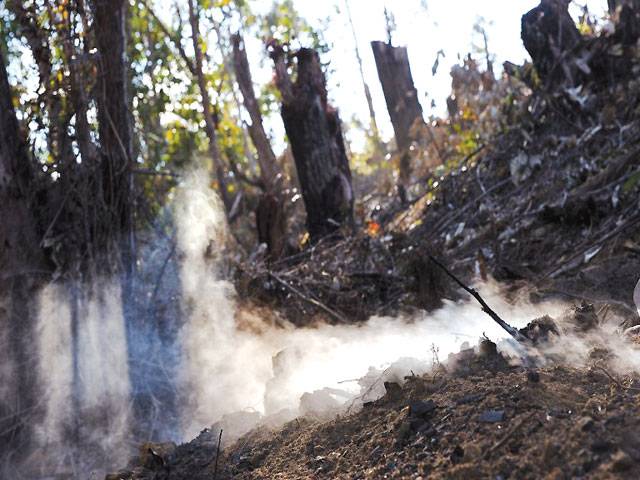RANOMAFANA - "Last time, I burnt a section about that big," says Mihareta Laivoa, pointing to a parcel of land about the size of a football field, as the farmer admitted to having destroyed forest to make way for his crops.
"I don't own a piece of land in the valley, so I have no choice," explains the 41-year-old father in a remote corner of Madagascar. "Without this, I wouldn't be able to survive." But the impact of deforestation on this south-eastern region of the African island nation has been devastating.
In a countryside stripped bare by decades of burning, only a few untouched, green mountain crests bear witness to the forgotten splendour of the area.
"Ten years ago, there were still forests on most mountainsides. Today, there are hardly any left," says Jean Doine Raifetra, mayor of the Ranomafana community, whose 22,000 residents live scattered across several villages.
In Ranomafana, on the edge of a UNESCO World Heritage site and national park, residents survive almost exclusively on subsistence farming.
From a rutted patch of land, long plumes of white smoke can be seen curling into the sky as the forest is burnt to make way for arable land - a practice the locals call "tavy".
But as forests are destroyed, vital water sources streaming down from the mountain dry up.
In a cruel catch-22, farmers - unable to sufficiently irrigate their crops - burn even more land in search of fertile soil.
From a hilltop overlooking his village, Jean Realy points to his parched rice paddy below.
He could once expect to produce eight or nine sacks of rice a year from that field. This year, he's facing a dry season.
"Because of deforestation, the (water) source has dried up. In the 1980s, by September we had water as high as your hip," he says.
Standing in his paddy now, his feet are bone dry.
He's relying on the rains - already scarce in this region - to avoid going hungry.
With an annual budget of just 100 ariary (about three US cents) per resident, Ranomafana does not have the capacity to defend the environment against 'tavy'.
So a consortium of NGOs, in partnership with the French Development Agency (AFD), have established a pilot forest conservation project in the region.
Launched in 2008, the 4.0-million-euro ($4.5-million) plan has brought together about 20 villages to create a zone of hundreds of hectares where deforestation is strictly forbidden.
"Without the forest, there are so many aspects of farm life that will vanish," says Matthieu Baehrel of the non-governmental organisation EtcTerra.
The message to farmers is that failing to protect the forests upstream means a drop in agricultural productivity downstream.
"Once this concept catches on, it becomes easier to change things," says Helene Gobert, who heads up AFD's rural development and environment projects in Madagascar.
The forests are also a target for villagers who use the wood to build and cook, so work is likewise focusing on showing how reforestation projects can be used to raise standards of living.
"Thanks to 'reforestation', we don't have to go looking in the forest for wood or building material," says resident Mamonjy as he hacks away with his machete at a grove of acacia and eucalyptus trees replanted in his village in 2012.
Still, in a region the size of France where nine out of 10 people live below the poverty line, the challenges are enormous.
"The message has begun to sink in and we're starting to see the results... (but) we're talking about changing mentalities about things that have been practised sometimes for millenia," says Baehrel.
The thing about trees, adds Gobert, is that they take a long time to grow and the positive effects are not immediately visible.
"We need projects that last if we're to have any hope of making a real difference," she says.






